Complete the Form
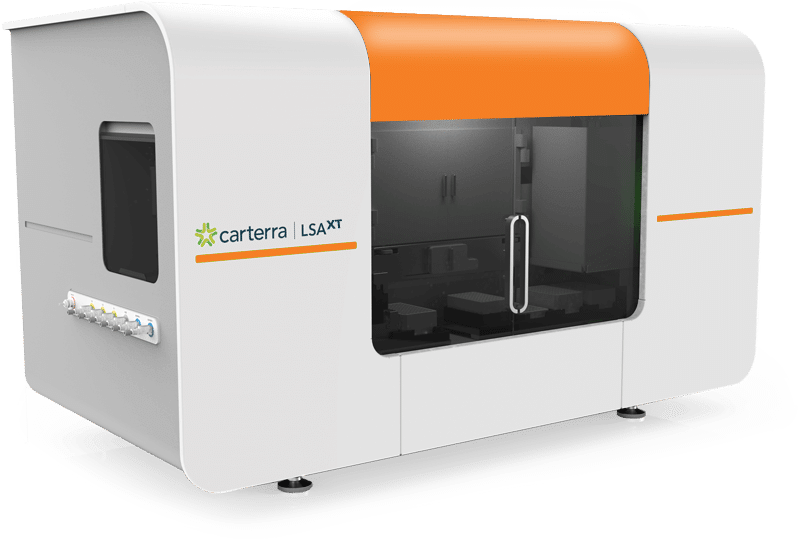
Enhanced sensitivity and fast data collection rate build upon unmatched capabilities in throughput and enable assays such as TPDs/PROTAC®s, kinase, cytokines, DELs, and protein:protein inhibitors.
The proprietary Carterra LSAXT HT-SPR technology platform expands beyond antibody discovery to enable PROTAC®s, protein-protein inhibitors, kinase, and cytokine screening and characterization. The LSAXT delivers up to 100x the data in 10% of the time and with 1% of the sample requirements of other systems and consumable costs of other label-free instruments.
The LSAXT enables the following automated workflows in single unattended runs:
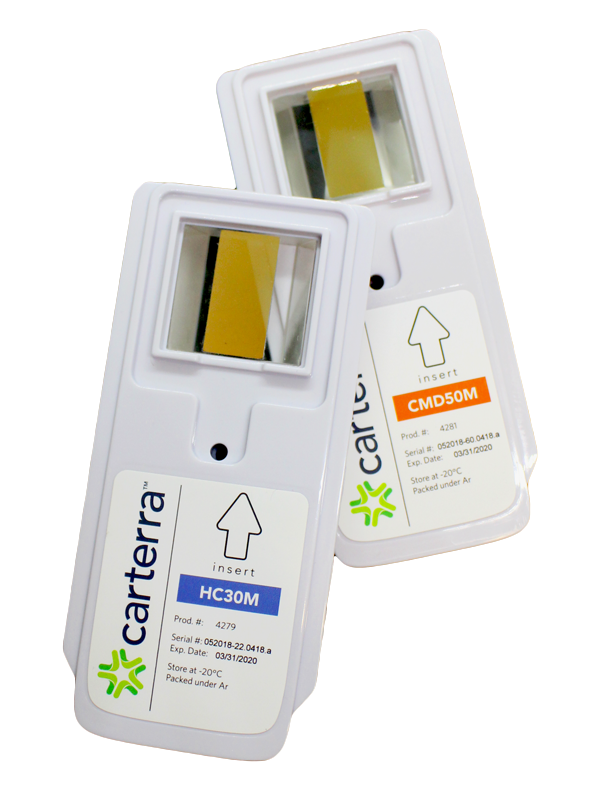
Selection of the appropriate sensor chip surface is essential for robust data quality when designing a high-throughput SPR assay. Carterra offers a broad range of chip surfaces to support the diverse applications available on the LSAXT.
The LSAXT expands the boundaries of HT-SPR with enhanced sensitivity and data quality.
When the assays become demanding, LSAXT provides all the benefits of the LSA plus:
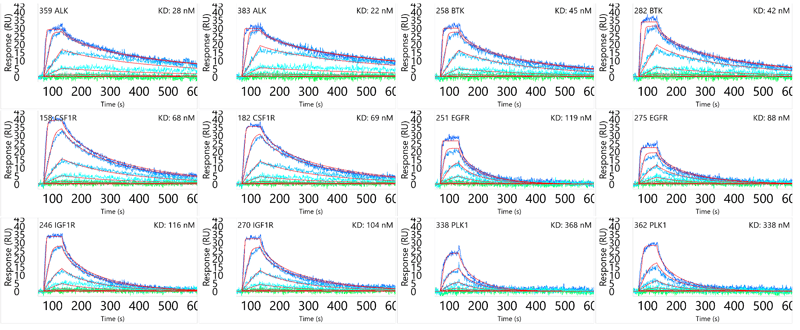
Kinetic and specificity profiles for staurosporine (466.54 Da) binding an array of kinases in duplicate.
The LSAXT’s throughput, flexibility, and applications are enabled by three core system modules:
1. Patented flow cell technology 2. High throughput SPR 3. Software
The Carterra LSAXT is covered by one or more of the following U.S. Patents: 8,210,119; 8,211,382; 8,383,059; 8,488,120; 8,999,726; 9,682,372; 9,682,396; 10,300,450
96-Channel Printhead:
Cartridge consisting of a 96 array for:
Single Flow Cell:
Cartridge covers the entire chip surface for:
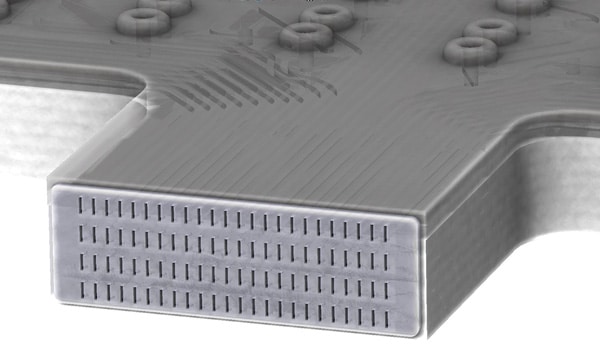
96-channel printhead
The 96-channel printhead enables a 96 protein array to be immobilized in parallel from flow onto a sensor chip surface in a single step. This can be repeated up to 4 times to build a 384 array on the SPR surface.
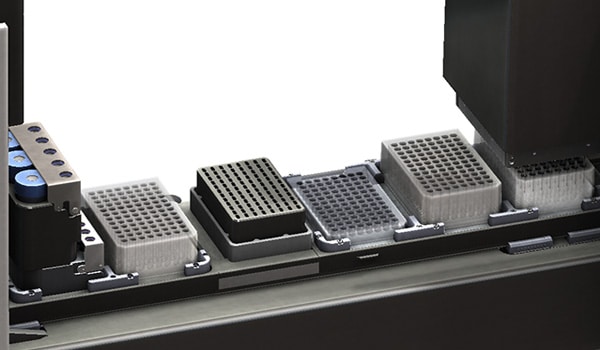
The sample deck adds another layer of throughput and flexibility.
96 or 384-well plates can be used in the LSAXT sample deck with 96-channel access in 3 bays and single flow cell access in 2 bays. The sample block has the capacity for 3 x 50ml conical tubes, 5 x 15ml conical tubes, and 8 x 1.5ml tubes.
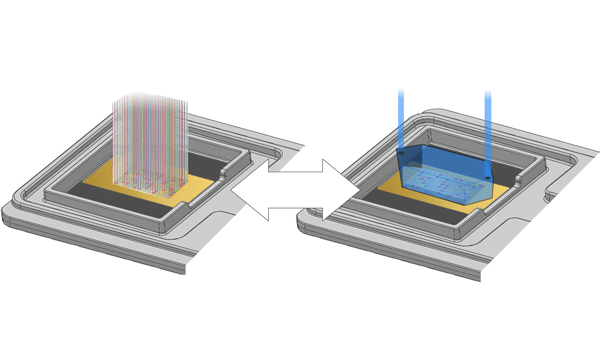
Automated switching between the 96-channel printhead and single flow cell cartridges.
Quickly and efficiently setup experiments using Navigator’s streamlined interface and purpose-built assay wizards. Fully automated experiments allow unparalleled throughput and real-time binding data richness. Queue up to six assays to maximize throughput for up to 7 days of unattended run time.
Key Benefits:
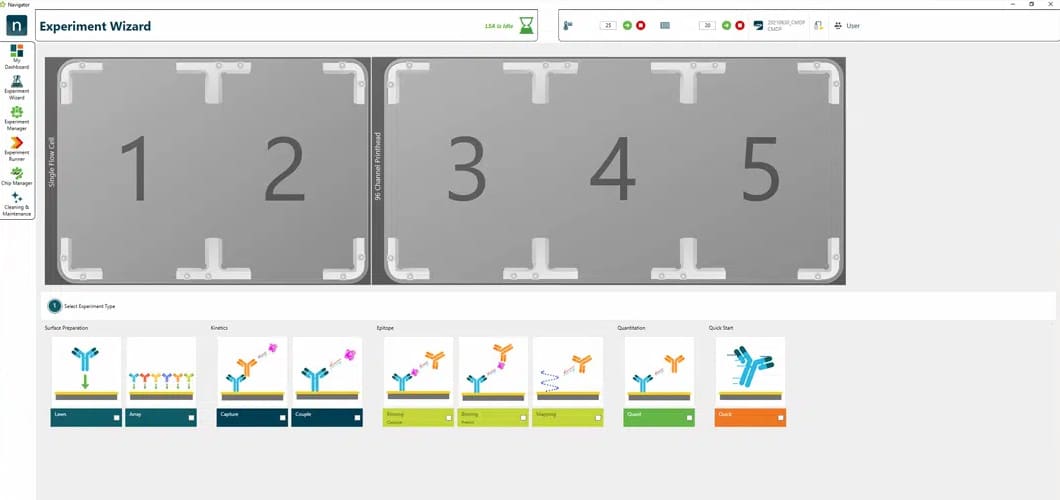
Hands-on time is further reduced via automated data analysis which enables rapid processing and initial curation of large experiments. Dedicated application-focused analysis software follows intuitive, simple-to-use workflows and powerful visualization tools.
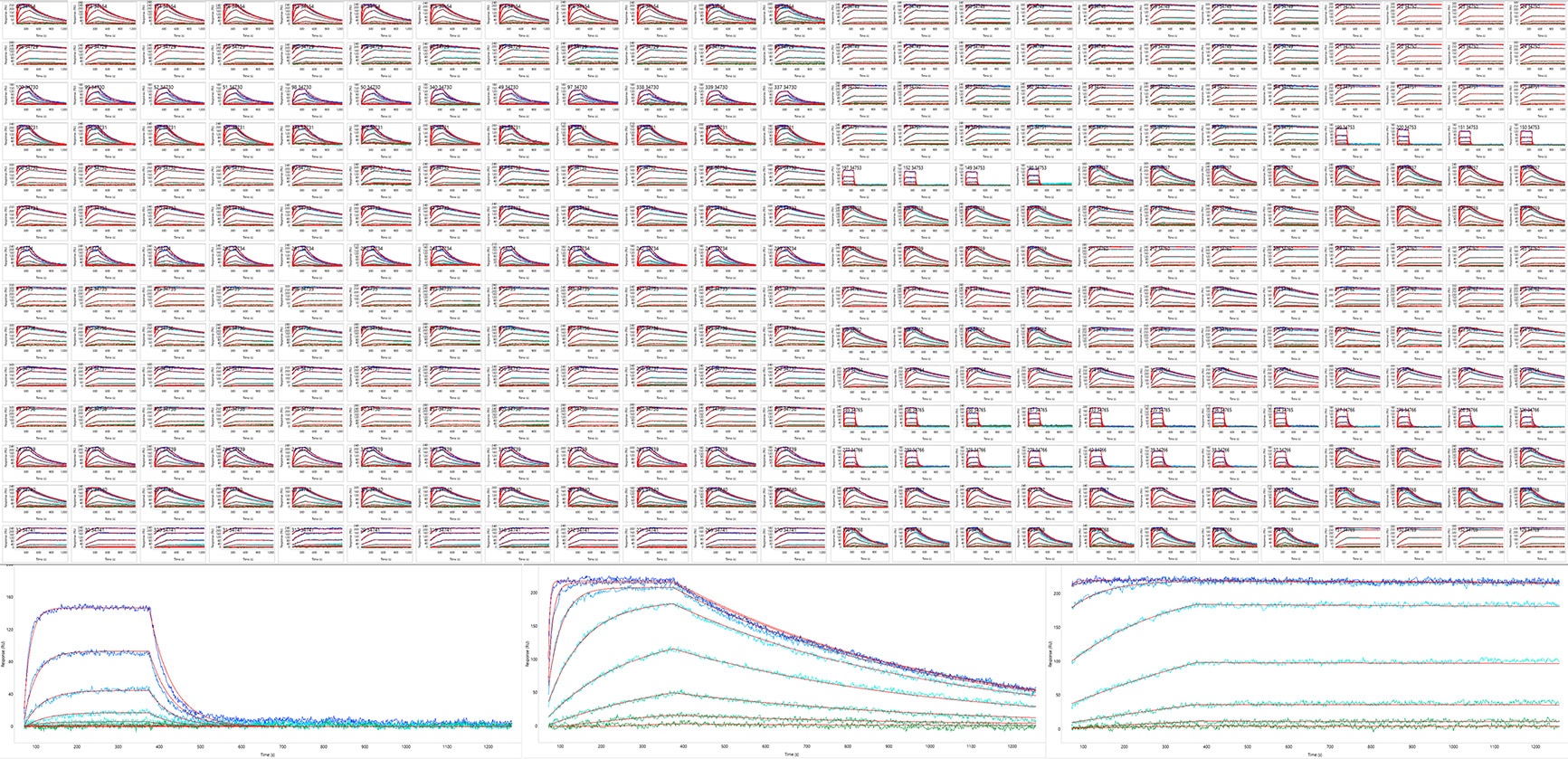
Complete kinetic data processing and analysis can be automated, with referencing, zeroing, cropping, blank subtraction, and kinetic model fitting all executed as a single operation for up to 1152 samples per unattended run.
Learn More about our Kinetics Software
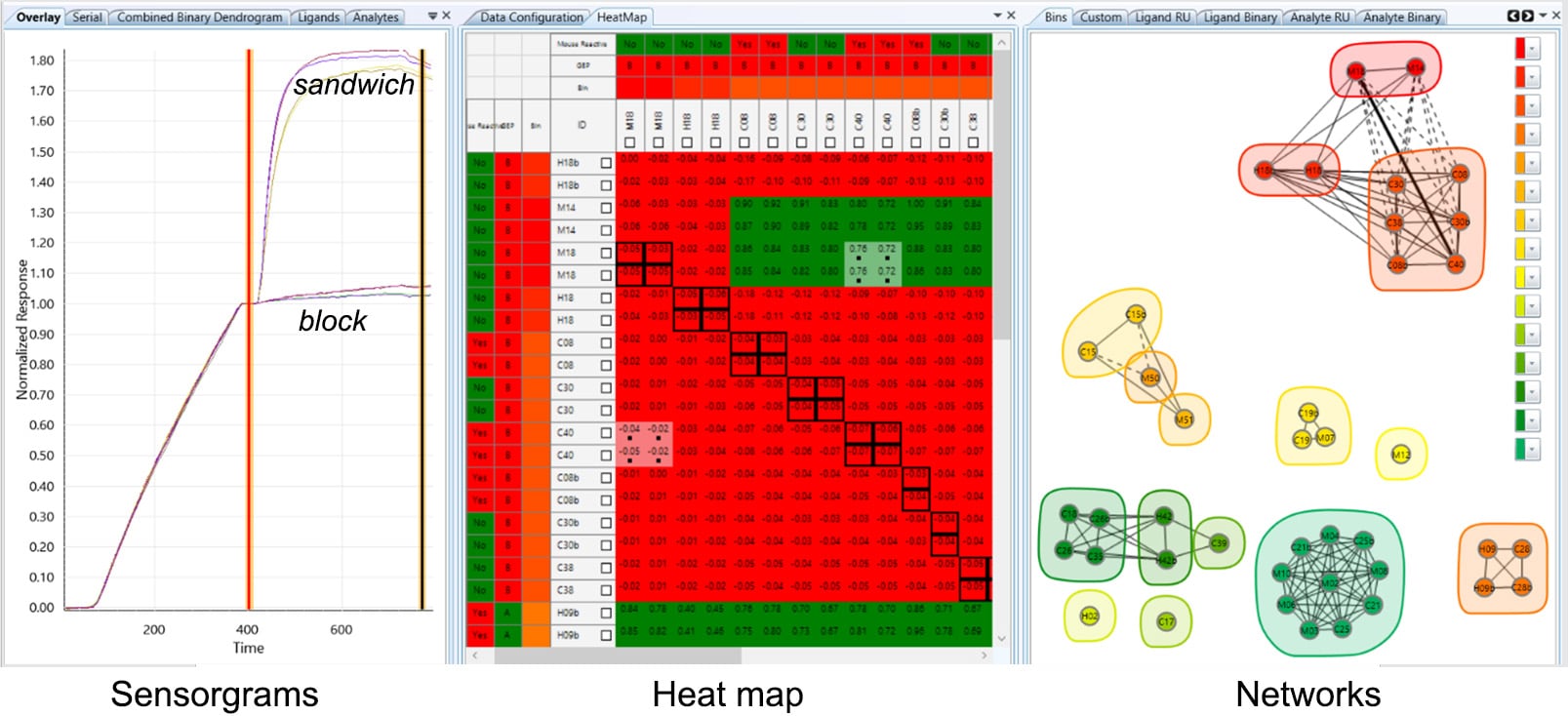
In the binning tool, data are linked across panels to facilitate review of sensorgrams, heat maps, networks, and a dendrogram.
The ability to merge orthogonal data and view networks by color options provides a powerful and intuitive way of assessing your antibody panel’s diversity, while keeping an epitope-centric view.
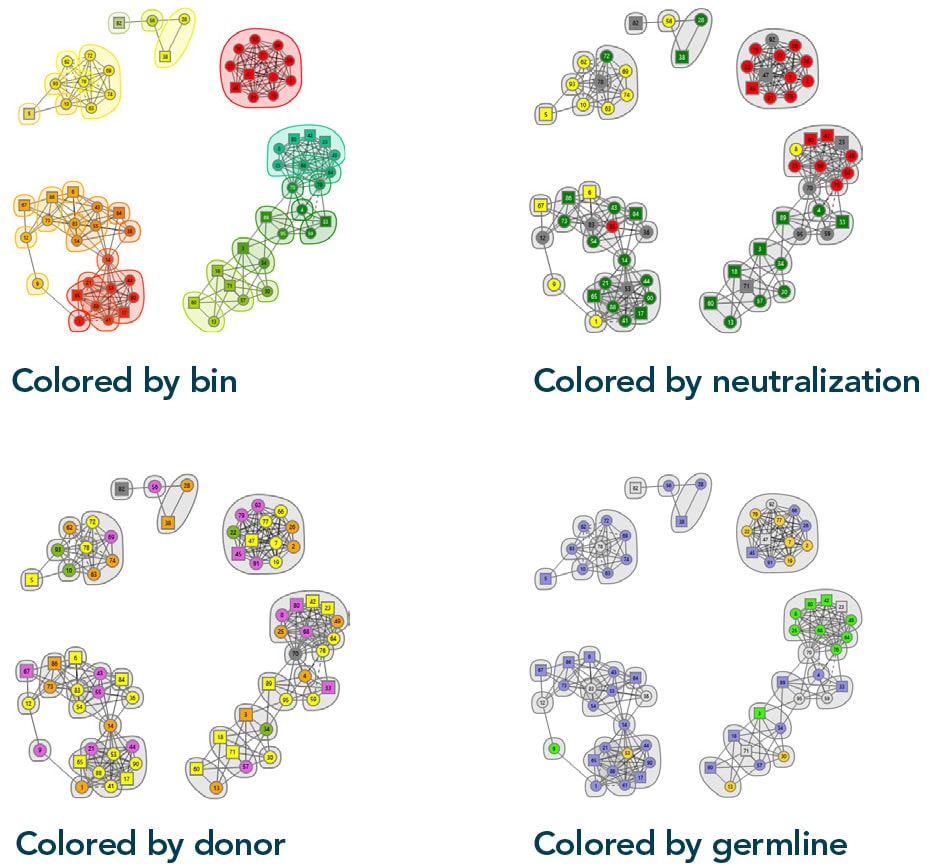
The network plots above provide an alternate view of the data, where chords represent the blocking relationships, envelopes inscribe the bins, and colors depict merged data.

A binning dendrogram, showing an adjustable custom cut-height (red line at 4.1) next to a community plot that is clustered by the custom cut height, which provides a less granular view than the four network plots above where the cut height was zero.